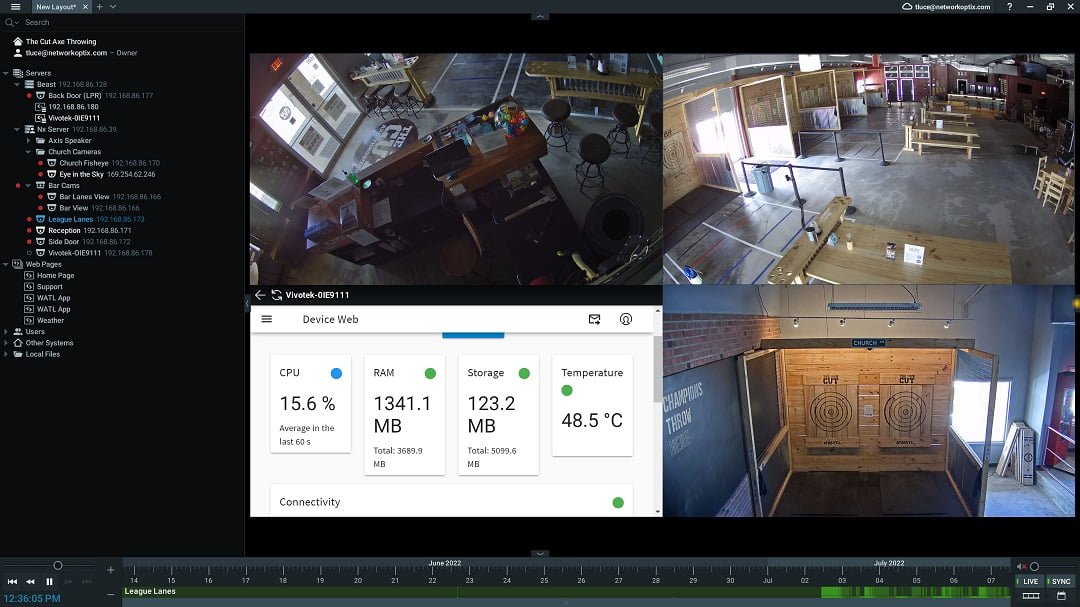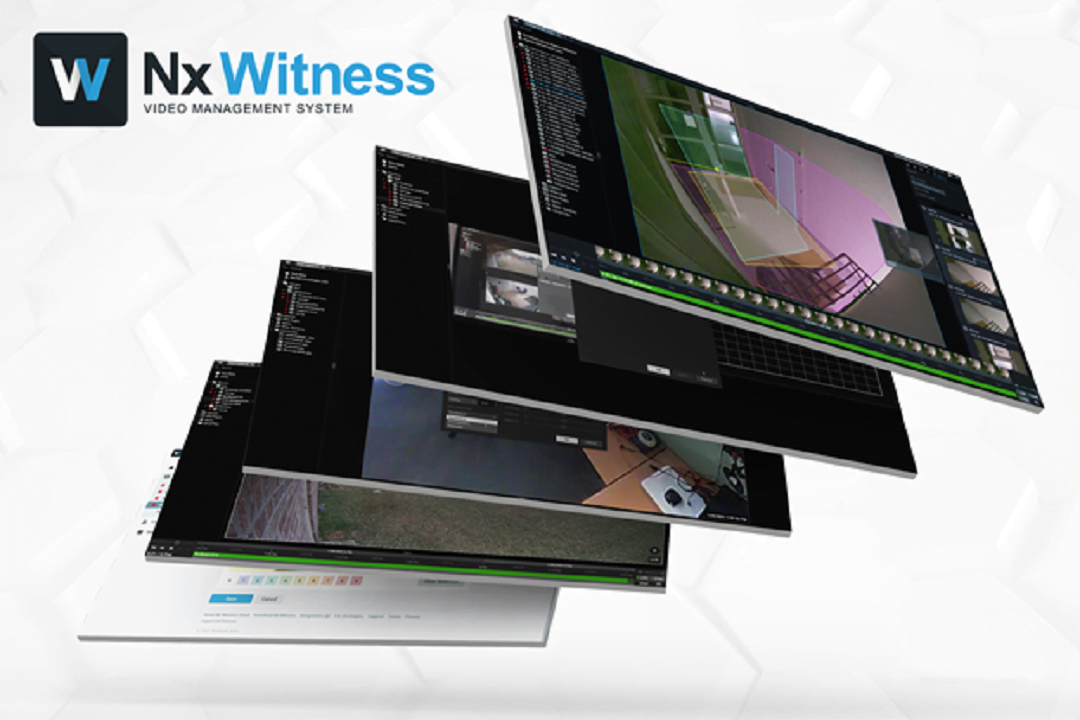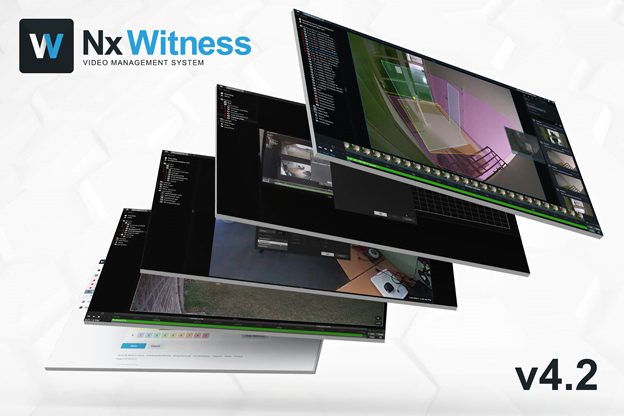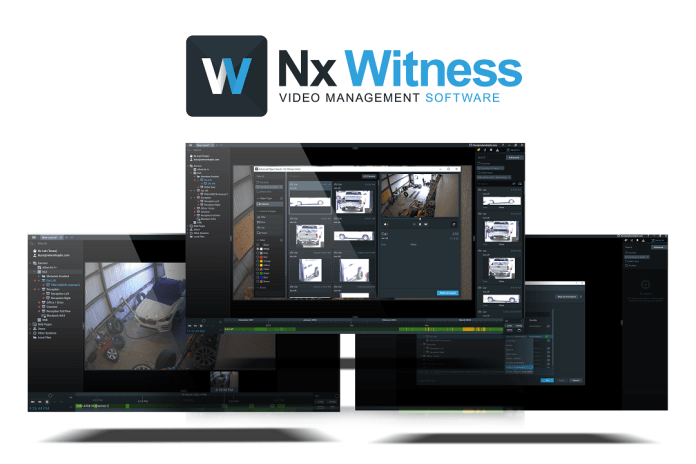Best of the Best VMS
♦ Best of the Best VMS – choosing the best of the best in VMS is tricky. There are many considerations, including budget, required functionality and existing system components, to say nothing of user priorities.
It’s also important to ensure a video management solution is not weighed down with unnecessary features that make operational navigation difficult. Over-specification can lead to operational latency – getting this aspect of choice right requires careful planning.
According to Tony Luce of Network Optix, the must-have features of the latest VMS solutions from the point of view of end users are going to vary considerably.
“End-users all have a unique point of view when it comes to how they use their VMS and what they believe is ‘must-have’ for them,” Luce explains. “When it comes to must-have VMS features, the first thing that springs to mind is flexibility. The second thing end-users want is an easy-to-use interface that allows them to find the video they want, fast. The third requirement is dependability – the video simply must be there when users need it.
“Network Optix and Nx Witness VMS solves all of these requirements by giving users the most flexible interface and integration tools, the fastest search and retrieval interface of any VMS out there – especially combined with new object-based in-camera or server-based video analytics – as well as unmatched stability and reliability thanks to our storage management and backup capabilities.”

Installers and integrators have quite different requirements when it comes to VMS.
“For installers and integrators, new features that can make a difference in the effectiveness of video systems are dominated by object-based analytics and search” Luce explains. “So, from our point of view, we’d recommend paying attention to the analytics offerings of competitive solutions. These solutions should be easy to deploy (plug and play), simple to install and configure, and need to be value driven.
“For instance, integrators shouldn’t have to pay an arm and a leg for analytics solutions that work well – Nx Witness VMS v5.0 was built with this in mind.”
Something installers and end users might wonder during the decision-making process is just how important to CCTV applications software-based video management solutions really are. Do they apply only to large systems? And what advantages do they and their topologies – offer when compared to options like direct to cloud and big NVRs?
According to Luce, there is no such thing as CCTV without video management software.
“Whether built into an embedded device like a DVR or NVR, or cloud-based, software is what makes a system function,” Luce explains. “Direct-to-cloud systems are dependent on Internet connectivity and fail without it. Big NVRs are just that – big NVRs. They are expensive, offer little redundancy, and often create a large single point of failure.
“In comparison, Nx Witness was designed to enable integrators to create CCTV solutions that meet a customer’s needs – no matter what they are – via a hybrid on-prem +cloud architecture with a lightweight, cross-platform server application and a server Hive +cloud architecture that allows users to create systems that are stable, fast, and reliable.”

Will there always be the sort of hybrid video management market we have today? Some app and cloud based, some browser-based, some NVR-based, some VMS supported by workstations and servers, according to Luce?
“In our opinion video solutions will always need to be hybrid solutions,” Luce says. “Video is best captured and processed locally for reliability and speed purposes. We believe a hybrid solution like Nx Witness VMS provides integrators and end-users the most reliability with the highest level of functionality.”
How good at integration are the latest VMS offerings? Is modern VMS best when it comes to technology partnering with IVA, alarm and access, and automation solutions, in Luce’s opinion?
“We can’t speak for other solutions, but we can talk about Nx’s approach to integrations – and that’s 3-fold,” Luce explains. “First, we provide instant integration tools like HTTP generic events and HTTP requests as an action that allow integrators and end-users to integrate virtually any 3rd party system in minutes using basic API calls.
“Second – we provide advanced integration toolkits like our metadata SDK for integrating object-based analytics solutions that allow third-party companies to implement semantic integrations via plugins that are easy to deploy and maintain.
“And third, with Nx Witness integrations are free, meaning we don’t charge licenses for integrations, unlike many of our competitors. We believe this approach makes Nx Witness the most flexible, value-driven VMS out there when it comes to integrations.”
Luce argues that for end users access from mobile apps is important for users of the latest VMS.
“According to Statcounter smartphones/mobile computing as of May 2022 makeup 59 per cent of computing devices out there, followed by desktop (36.5 per cent) and then tablets (2.33 per cent),” he says. “These figures mean it’s safe to say that a good mobile app for your VMS is critical for most users. In our case, Nx Witness Mobile was designed to make it simple to get an alert and quickly navigate to footage (live or recorded) on Android and iOS devices.”
Something that’s pivotal to the future of CCTV technology is just how important IVA functionality and/or integration to IVA modules with the latest VMS solutions to modern end users. According to Luce, IVA is a critical part of any modern VMS.
“Object-based analytics are revolutionizing the way end-users are using IP video by turning ‘boring movies’ into actionable business intelligence through the capture of extensive amounts of metadata,” he explains. “Not only are end users asking for IVA – integrators are able to deliver it, because of a high number of in-camera integrations and simple third party integrations, such as those in the Nx Witness Integrations Marketplace.”

Did the COVID-19 pandemic alter the way end users use remote management tools like VMS – and in what ways?
“The COVID-19 pandemic really reinforced the need for fast, easy installation and configuration of video management systems and simple, reliable remote connectivity to those systems,” says Luce.
“Nx Witness checks both of those marks with its simple approach to installation (no prerequisite software requirements, works on all major OS’s and hardware platforms) and free cloud capabilities that allow for fast, reliable connectivity and viewing of IP cameras from anywhere, anytime.”
Where will the next generation of VMS go technologically speaking – what sorts of functionality should users and integrators expect over the next 5 years?
“We see a continual evolution in the power and capabilities of Edge/IoT devices, leading to increased capability and reliability on-prem,” explains Luce. “We also anticipate the rapid development and integration of artificial intelligence-driven capabilities like anomaly detection, advanced reporting, and hyper-efficient storage and retrieval technologies.”
According to Luce, the key qualities that differentiate Nx Witness VMS from competitive solutions remain the same as they always have been.
“Nx Witness solutions are simple to design and implement, offer reliability and scalability on commodity hardware, are instantly usable, and make it simple to find the video you need when you need it from anywhere, at any time,” he says. “The solution also integrates seamlessly, quickly, and freely with leading 3rd party cutting edge complementary solutions like object-based analytics, fire, alarm, and access control.”
Over at EOS Australia, Kang Lu says ease of use is at the heart of any VMS – including the Digifort VMS distributed by EOS.
“End users seeks convenience, so from the core a VMS needs to have features that give the user a fast and easy process on performing their common practice,” Lu says. “For instance, when the end user is looking for an incident, the VMS needs to have the feature that gives the user flexibility to be precious and accurate.
“With the increasing use of AI in CCTV, embedded smart search needs to become a standard feature and must include functionality like directional and loitering filters. We see face recognition and people ID features gaining momentum.”
For Lu, VMS is central to video surveillance, but he says other options have important applications.
“On premise VMS always will have an advantage in performance and scalability,” Lu says. “Cloud system greatly reduce the hardware necessary, but it can be heavily reliant on internet connectivity to perform everyday functions well. And while NVRs are cost-effective, they are limited in the scalability of the system when expansion of the feature set is required.”
“For these reasons the market will always demand various solutions for different applications. No one system can suit all the requirements. For instance, the cost factor, performance factor or usability will dictate the type of system that will ultimately be chosen.”

Is modern VMS best when it comes to technology partnering with IVA, alarm and access, and automation solutions, in Lu’s opinion?
“Yes, VMS has become more accessible,” Lu explains. “All the VMS platforms are partnering with popular security solutions for HLI and give users the ability to manage multiple systems from a single interface, which is what the market wants in VMS applications.
“When it comes to new functionalities like AI, with NVRs offer the ability to have IVA at the edge, end users are expecting VMS to have a similar function, at least on a certain level, without having to add any additional modules. Further, if an additional module is needed, the performance and feature sets need to be far superior to that offered by NVRs.”
Lu agrees access from mobile apps is vital with the latest VMS solutions.
“Many users favouring mobile applications for their convenience and since the mobile phone has changed the way users manage their security solutions when compared to the past, so having a great mobile app is a great advantage.”
What sorts of functionality should users and integrators of VMS expect over the next 5 years, according to Lu?
“More than likely, VMS will adopt some sort of cloud management, or offer the user a choice between on-premise or cloud,” Lu explains.
“Ands a result of the COVID-19 pandemic there have been new functionalities supporting social distancing, occupancy rates and temperature monitoring functions – all these features have proved highly desirable and can instantly notify users if issues arise – this trend will continue.”

What are the key qualities/features that differentiate your solutions from other options on the market today?
“Our goal at EOS is to demonstrate usability and convenience to the security integrator and the end-user when adopting VMS, rather than traditional NVR solutions,” Lu says.
“We can make the argument our solutions aren’t the most feature-rich system in the market, but for many applications they are ideally fit for purpose,” Lu says.
“It’s quite important when it comes to the user experience to effectively utilize 80 per cent of the feature in the VMS, rather than having difficulty operating the relevant 40 per cent of a VMS which is made harder to navigate because of an over-abundance of functions.”
#SEN #SENnews #security #electronics











